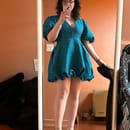For those unfamiliar with queer history, you might associate the term lavender with a favorite scent, or the song “Lavender Haze” by our beautiful friend Taylor Swift. The historic use of the word lavender was a secret code to convey to others that the person wearing the color or flower was queer. There were many systems and codes used to subtly communicate with one another in ways the general population would not catch on to.
It is a known fact that LGBTQ2+ narratives have been largely nonexistent in historical contexts due to a number of factors, such as religious, cultural, political, and otherwise. That being said, there have been times I found myself reading an older book and thinking to myself: wait, are these guys gay? I began talking to the people around me who read or were interested in similar things and found that we all noticed moments of slight romantic tension between same-sex characters in classic literature. Why is that? Is it because the writers were gay? Possibly. But what I think the more likely explanation is that men didn’t write women with the same emotional depth as they wrote men. This resulted in all the emotional connections happening in a very bro-mantic context. Of course, some writers recognized the romantic language, and the gay ones used it to hide their queer narratives, some classics are intended to be read as queer, and for others, it’s just a happy accident.
This theory also prompts the question: where can we find lesbian romanticism in these writings? Though they are subtle, they are there. As gay romanticism appears in spheres which women are not a part of. The spheres men were not included in were those of feminine rage and exclusion. As men pushed women into these worlds excluded from men, they also pushed them into situations where only their close friends could truly understand the pain they experienced. From that came romanticism.
Gay men and straight men both wrote books containing homoromantic subtext, but some may not have been aware of how their writings could be taken. It might have been a latent desire, a lack of understanding of women, or strategic choices intended to hide the overt gayness. Whichever, the result remains the same. Here are some classic novels containing homoromantic (and homoerotic) subtext.
1. The Picture of Dorian Gray
“The only way to get rid of temptation is to yield to it.”
The most popular queer-coded classic novel is The Picture of Dorian Gray. Though Dorian has a crush on a beautiful actress, his best friend Basil is enamored with Dorian. Basil goes into great detail describing to the audience not only Dorian’s beauty but his charms and compelling nature. Oscar Wilde himself was tried and sentenced for homosexuality.
2. Dracula
“I am all in a sea of wonders. I doubt; I fear; I think strange things, which I dare not confess to my own soul.”
Dracula is the most well-known vampire novel. Fun fact: Dracula was written as a metaphor for the British fear of Eastern European immigrants. The story itself contains an interesting and unexpected queer representation in the form of its titular character. The main character Harker, on being trapped in Dracula’s castle, makes many notices of Dracula’s lips, remarking how they can kiss his neck. Coincidentally Bram Stoker was gay and in the closet when he wrote Dracula.
3. The Great Gatsby
“…one of those rare smiles with a quality of eternal reassurance in it… It understood you just as far as you wanted to be understood, believed in you as you would like to believe in yourself, and assured you that it had precisely the impression of you that, at your best, you hoped to convey.”
The Great Gatsby is another very famous romance book that I’m going to dig into because it took me two times before I got any value out of the book. The message for me came more poignant from the movie which helped me understand the book in a deeper way. What the book and movie do is show the love and dedication Gatsby has for Daisy and also the narrator’s (Nick) love for Gatsby. Nick has a very obvious infatuation with Gatsby which translates to him being plunged into Gatsby’s world of drama. It’s the classic straight crush. You love them but they will never love you. So you love them as a friend because you know you will never be more.
4. Orlando
“Her eyes are pure stars, and her fingers, if they touch you, freeze you to the bone.”
Written by Virginia Woolf, it is known as one of the first books about gender identity. Orlando experiences a transformation and wakes up female after living most of his life as a man. Orlando experiences attraction to both men and women. Her deep attraction to women as a man and as a woman is evident in the book. Virginia Woolf herself was bisexual; both she and her husband had same-sex affairs during their marriage. Her most notorious and long-lasting affair was with Vita Sackville West. Orlando was a tribute by Virginia to Vita.
5. The Color Purple
“I think it pisses God off if you walk by the color purple in a field somewhere and don’t notice it.”
The Color Purple by Alice Walker is a book about two sisters, Celie and Nettie, who separated in youth. Celie develops a very close relationship with another woman, Shug Avery, that grows into a relationship. This is the least subtle of all the homo romanticisms, it is in your face lover, rather than a whisper. As two black women, they turn to each other for compassion. Through this unique understanding of each other’s struggle their very real feelings for each other are able to blossom.
6. If not, Winter
“Among mortal women, know this
From every care
You could release me”
Of the few fragments of surviving poems of Sappho, there is a narrative that suggests queer affection. Sappho lived on the island of Lesbos (where the term lesbian comes from) and taught other women sent there to write poetry. She was banished from Greece for an unknown reason and was married to a man whose name translates to “dick Alcocks of man island,” she clearly had a sense of humor. One of my favorite lines from her poems comes from If Not, Winter.
The term sapphic refers to Sappho, she was a poet in Greece who wrote about her deep love of women. The sphere of sapphic romanticism is less clear in classic writings because it is often the writings of women that are suppressed or dismissed as unimportant and frivolous. Luckily a few gems of content still gleam in the sea of narrative erasure.
Classic literature is akin to fantasy in that it takes us to a world that is foreign to us. However, we know it is true, people really did wear lavender to secretly tell other queers their identity, women did seek companionship from each other, and men loved each other too. Straight couples were everywhere, yet it is hard to think of one that as romantic as the secret gay lovers.


